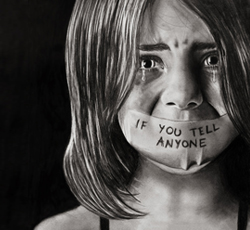Child abuse and neglect


All persons under the age of 18 have the right to physical and psychological integrity, and to protection from all forms of violence. Article 19 of the Convention on the Rights of the Child (CRC) –adopted by the United Nations in 1989– exhorts States parties to take “all appropriate legislative, administrative, social and educational measures to protect the child from all forms of physical or mental violence, injury or abuse, neglect or negligent treatment, maltreatment or exploitation, including sexual abuse, while in the care of parent(s), legal guardian(s) or any other person who has the care of the child".
Nonetheless, for various social and cultural reasons, children suffer violence in the home, at school, in legal and child protection systems, at work and in the community. Children are abused precisely in those places that should offer them protection, affection, developmental stimulation, shelter and promotion for their rights.
Child abuse is defined as “acts or omissions carried out with intent to cause immediate harm to the victim. The abuser perceives the harm caused as the ultimate goal of their actions.(World health organization, 2005)
Globally, 1 in 5 girls and 1 in 13 boys have been sexually exploited or abused before reaching the
age of 18. Some recent research suggests that online interaction is now so ubiquitous that it is
likely to feature in some form in almost all cases of child sexual exploitation and abuse. (UNICEF
2021)
We at the Asian Online Resource Centre realize that one of the best approaches to prevent child maltreatment is to help communities and professionals develop their skills and knowledge so that any professional working for the prevention of child abuse can not only understand children’s emotional, physical, and developmental needs but also will have the capacity to deal effectively to work towards prevention and response to child maltreatment.
The 2006 UN Study on Violence against Children estimated that in South Asia every year between 41 and 88 million children witness violence at home – the highest regional total in the world.
Evidence also indicates that half of the world’s child brides live in South Asia, where 46 percent of women aged 20-24 are first married or in union before they reach the age of 18 and that around 44 million children are engaged in child labour across the region.
Furthermore, it was also evident from many research studies that any form of abusive behaviour may result in the physical or mental impairment of the child or even death. Small children are especially vulnerable to physical injury such as whiplash or shaken infant syndrome resulting from battering. Abused children, quite often, are more likely to experience mental health issues such as generalized anxiety, depression, truancy, shame and guilt, or suicidal and homicidal thoughts, or even to engage in criminal activity, promiscuity, and substance abuse.
The respective governments of countries in Asia, South Asia, South East Asia, and the Pacific region consistently enhance the capacities of social welfare and various other sector professionals from Government and non-government regions who address child protection issues.
The ICCWTN Asian Online Resource Centre is committed to providing available resource materials to enhance the capacities of stakeholders working towards protecting the Rights of children and the prevention of child maltreatment through online support services so that child abuse can be better combated and managed.
Enhancement of capacities could play a vital role in understanding risks of children and to adopt a scientific, evidence based approach for preventing, or managing child abuse.
If you are looking for a source to build your skills and knowledge in child protection, you have come to the right place.



